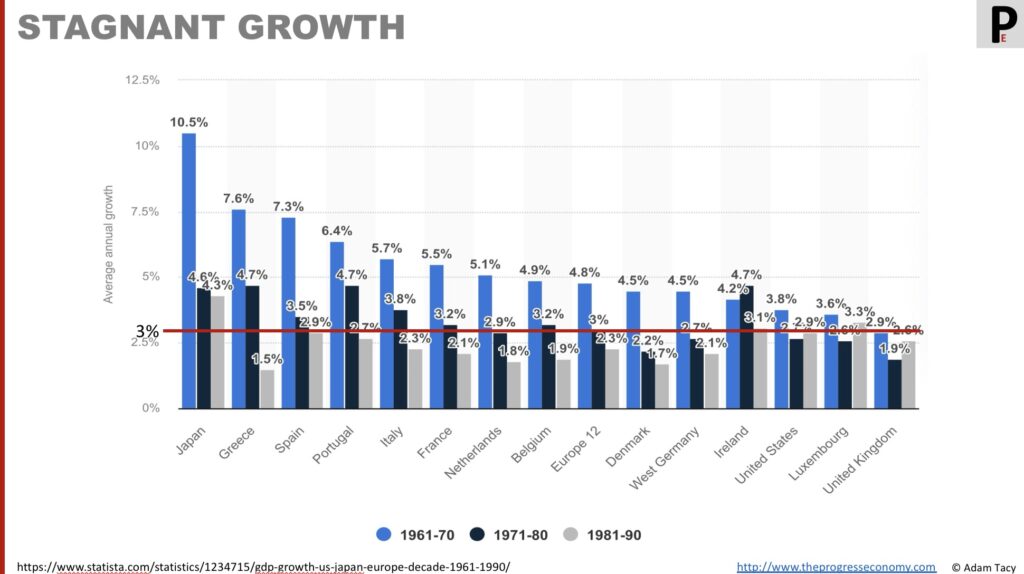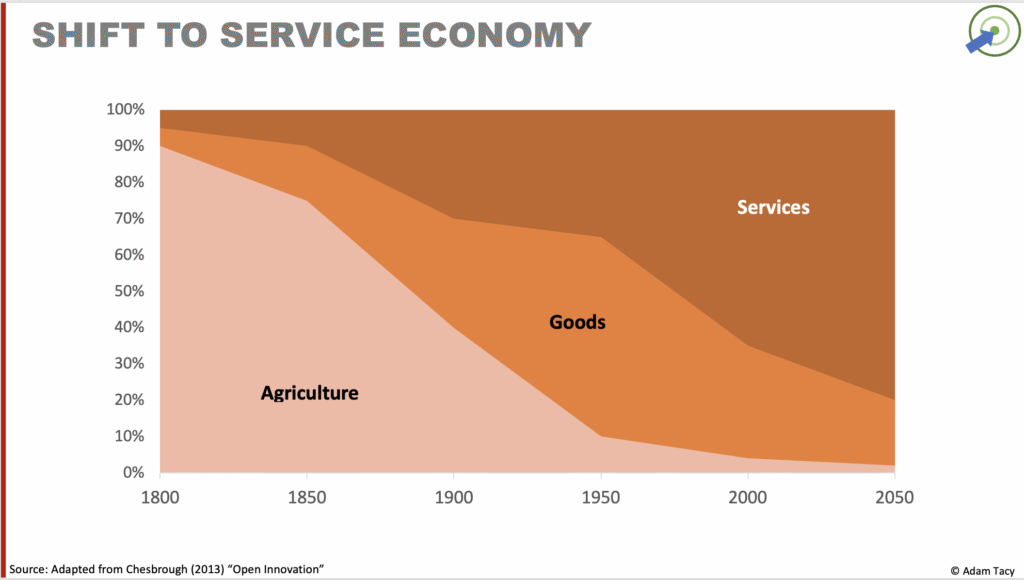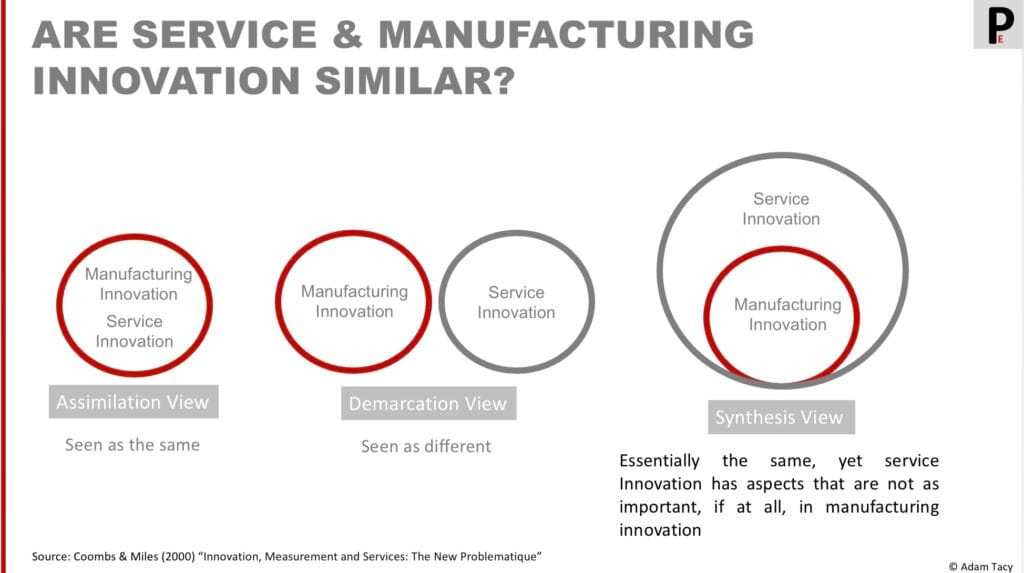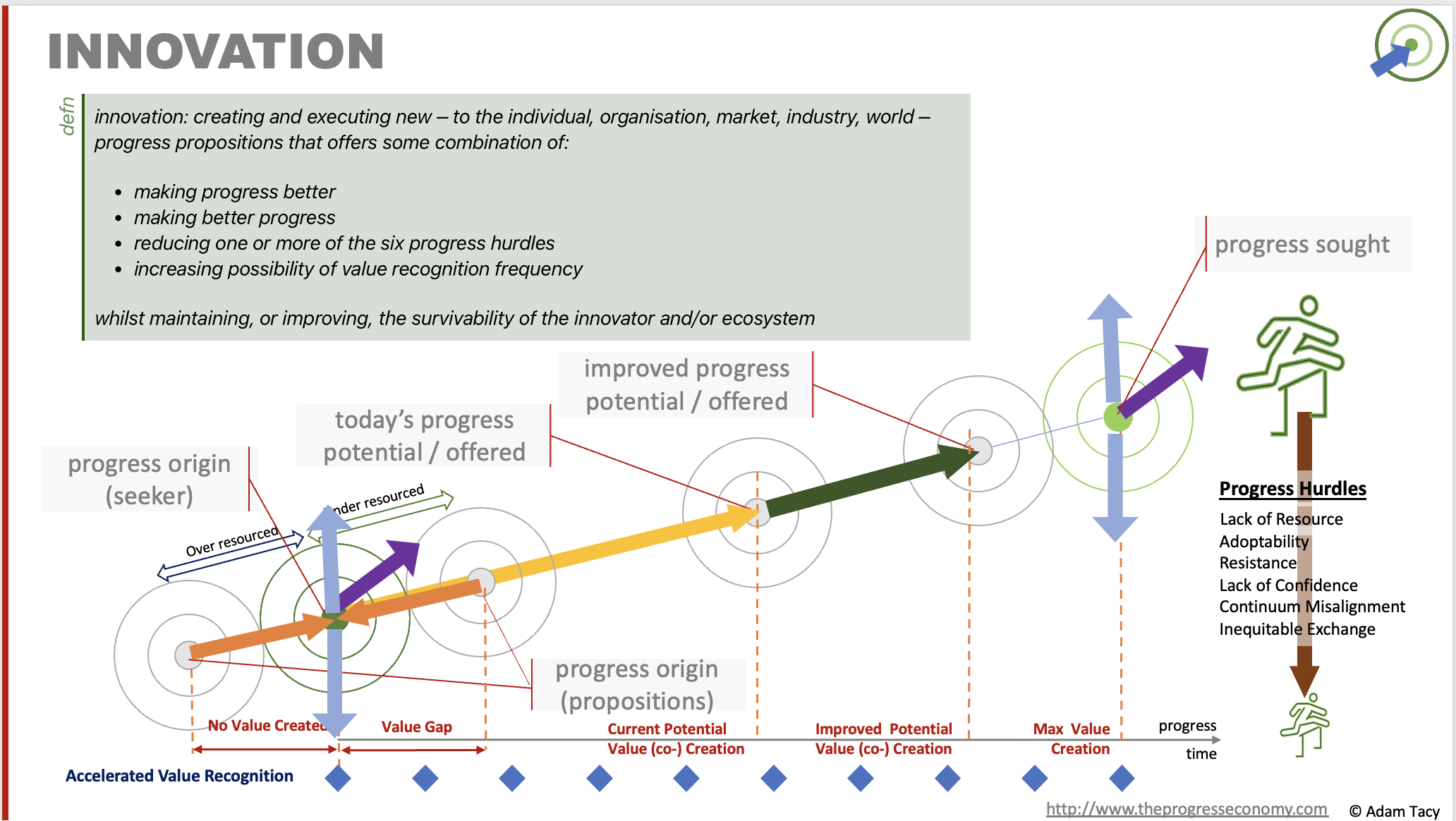Chasing value often disappoints
Here’s the problem. Despite substantial investment, most executives remain dissatisfied with innovation outcomes. McKinsey notes that only 6% of executives are satisfied with their innovation efforts. That means 94% are dissatisfied!
Only 6% of executives are happy with their innovation initiatives
McKinsey
Why? Predominantly it is our addiction to value:
- Value is hard to define
- We perform Innovation theatre that is often seen as value creating
- Value-in-exchange model has blind spots that are increasingly important
Defining value is hard
We remain anchored in our traditional “adding value” mindset. But value is difficult to define, inconsistently measured, and assessed primarily from the supplier’s perspective. As Anderson and Narus observed:
remarkably few suppliers in business markets are able to answer…questions like…How do you define value? Can you measure it?
Anderson and Narus (1998) ”Business Marketing: Understand what customers value”
How many hackathons, ideation competitions, and brainstorming sessions have you sponsored, only to see few (if any) tangible results? How confident are you that your organisation even shares a common definition of “innovation success”, or understands what customers truly value?
If you’re chasing value, but neither you nor customers can define, or understand, value, are you surprised your innovation activities fail?
Performing Innovation theatre
Worse, those activities likely descend into what Steve Blank calls, innovation theater. Activities that feel good internally, and look good in shareholder/marketing reports, but yield no tangible results (additional customers, reduced costs, growth etc).
When our innovation activities deliver few/no tangible results, we are performing innovation theater.
Steve Blank (2019) “Why Companies Do ‘Innovation Theater’ Instead of Actual Innovation”
Are you falling into a “but, innovation is hard” perspective, or even a sunk cost fallacy. that excuses the innovation theatre in your organisation? The next hackathon will surely be the one that changes our fortunes.
Not seeing the blind spots
There’s no doubt that the value-in-exchange model has been wildly successful. It powered centuries of industrial and economic expansion, rewarding firms that produced efficiently, priced competitively, and exchanged effectively. But it carries blind spots – before, after, and across the point of exchange. For example:
- Prioritising consistency over customisation – missing value before exchange
- Chasing the next transaction – missing post-exchange value
- Valuing new exchanges over circular thinking – missing value across the exchange
- Elevating goods over services – narrowing the solution space
- Falling into marketing myopia –
- Favouring simple exchange over more innovative business models
- Assuming providers define value
For much of the 20th century, these blind spots didn’t seem to matter. Growth was abundant, resources appeared limitless, and the negative consequences of short-term value capture were distant or diffuse. But today, it seems we may have run out of space to ignore them.
But, growth has slowed.

The International Monetary Fund warns that we may be entering a decade of structural stagnation — the “Tepid 20s”.
The world is facing a decade of stagnation – the “Tepid 20s”.
Chair of International Monetary Fund
A prime example of a blind spot is sustainability. Under a value-in-exchange mindset, a manufacturer’s economic incentive ends at the point of sale. There is little motivation to design for durability, recyclability, or long-term impact. In fact, the opposite often applies: short product lifespans drive repeat purchases and higher turnover, even as they increase environmental cost.
Consider Gillette’s “razor and blade” model, often celebrated in business schools as a masterstroke of recurring revenue. The firm sells the razor handle at low cost, then captures margin through a continuous stream of blade replacements. Financially elegant, but is it best environmentally? The business model encourages disposability rather than durability.
The same dynamic can be found in fast fashion, where value is extracted through high volume and low price, with little consideration of the environmental or social aspects.
Mismatching to Economic make-up
Our traditional value-in-exchange model has a broader structural problem: it is deeply rooted in goods and manufacturing. That was natural when the model was conceived – during an era defined by industrial production, physical goods, and efficiency at scale. But over time, we’ve tried to force-fit services into a model designed for products.
This legacy produces the familiar distinction between goods and services, often expressed through the so-called “five I’s”:
- intangible – services cannot be physically held or inspected before purchase
- inconsistent – quality varies by instance, context, and provider
- inseparable – production and consumption often occur simultaneously
- involvement – services typically require active customer participation
- inventory – services cannot be stored for later use
These differences have led to a lingering goods-versus-services mindset. Where goods are perceived as stable, tangible, and valuable, while services are seen as variable, transient, and somehow lesser.
Yet this mindset is increasingly out of step with economic reality. As Henry Chesbrough highlights in Open Innovation, the structure of our economies has shifted dramatically. Manufacturing’s share of GDP has declined, while services have surged — not only in mature economies but across emerging markets as well.

The World Trade Organization makes the point plainly:
The services sector today generates more jobs (50 per cent share of employment worldwide) and output (67 per cent share of global GDP) than agriculture and industry combined – and is increasingly doing so in economies at earlier stages of development
The future of trade lies in services: key trends, World Trade Organisation
In other words, two-thirds of global economic value now comes from services. The question, then, becomes inescapable: is a model of innovation built for goods still viable in a world dominated by services?
This very question has been debated for decades. Scholars have described three broad perspectives on how to interpret the relationship between goods and services innovation:
Coombs & Miles (2000) “Innovation , Measurement, and Services: the new problematique”
- Assimilation view – services are essentially the same as goods, so existing innovation models apply.
- Demarcation view – services are fundamentally different and require distinct theories and tools.
- Synthesis view – services and goods share underlying principles, but service innovation introduces new aspects that are less relevant (or absent) in manufacturing

The synthesis view is the most appealing, and it largely explains past growth patterns. The industrial era’s spectacular GDP expansion reflected a goods-dominant innovation spurt, increasingly supplemented by service extensions. But today’s slowdown may be the reverse: a services-dominant economy constrained by goods-dominant logic. That is, we’ve not sufficiently captured and leveraged the aspects that are important to service innovation but are not as important, if at all, in manufacturing innovation.
Put simply, our economies have evolved, but our innovation model has not. We’re trying to navigate a service-based world with manufacturing-era maps – and the result is declining innovation returns, rising inefficiency, and slower growth.
Focussing on the manufacture/provider
When we look closely, we notice that much of our language around value and innovation is subtly tilted toward the manufacturer or provider. The purpose of innovation, we’re told, is to create a customer – to produce something new, embed additional value within it, and exchange it for revenue. In this framing, it is the innovator who acts, and the customer who reacts.
The innovator defines what’s valuable, sets the price, and controls the exchange. Once the exchange is complete, attention quickly turns to the next transaction. What happens after the sale the how the offering is used, whether it actually helps the customer make progress, is often treated as peripheral, or worse, invisible.
Even when marketing departments urge us to focus on customer needs, this tends to be interpreted through the same producer-centric lens. A quick episode of Dragon’s Den or Shark Tank reveals the pattern: entrepreneurs proudly describe the features they believe customers will value, rarely offering evidence that customers actually do. The narrative remains one of “value added by the innovator,” not “progress enabled for the customer.”
For a more enduring critique, we can turn to Theodore Levitt’s classic Marketing Myopia (1960). Levitt’s insight remains as piercing today as it was then:
People don’t want to buy a quarter-inch drill. They want a quarter-inch hole
Levitt, Marketing Myopia
This deceptively simple observation captures the problem perfectly. Firms focus on the drill – the artefact of production – rather than the hole – the outcome sought. The result is that innovation becomes an exercise in adding features.
We can see this everywhere: smartphones boasting camera specifications few users exploit, electric vehicles marketed on acceleration rather than ecosystem usability, and enterprise software sold on capability breadth rather than workflow impact. Each represents a subtle but costly form of producer myopia where innovation is built around the act of production rather than the act of progress.
This manufacturing-oriented mindset made sense in an industrial economy, when ownership and production were the dominant means of creating and capturing value. But in today’s service-based, experience-driven economy, it creates friction and waste. Customers no longer buy things merely to own them; they buy outcomes that move them forward.
The innovation problem is structural: the wrong endgame (adding value), the wrong mental model (value-in-exchange), and the wrong success lens (supplier-centric rather than Seeker-centric).

Let’s progress together through discussion…